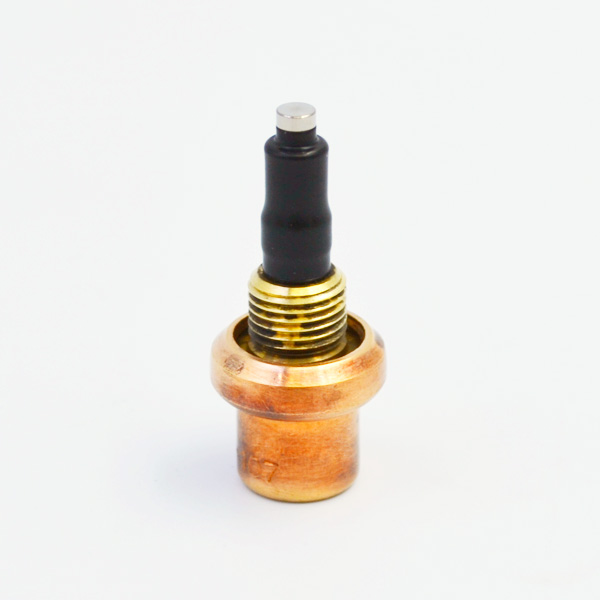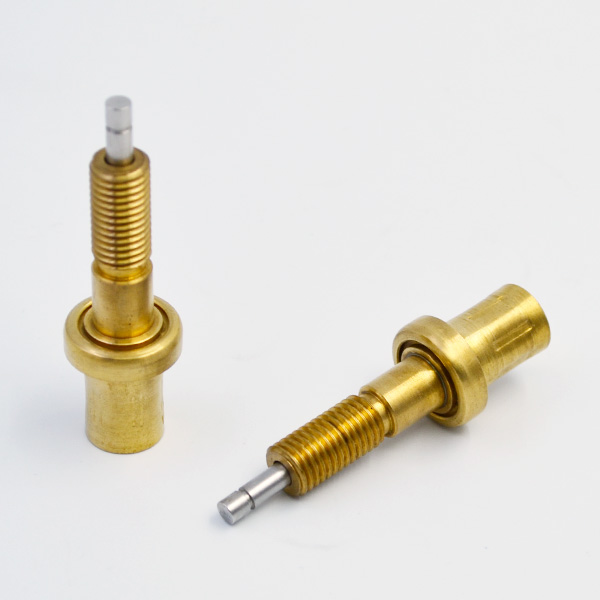This paper mainly analyses how the programmable controller can be better used in industrial air conditioning, and discusses some specific methods and means of the application of the programmable controller in industrial air conditioning, which can provide reference for future air conditioning design. In the process of industrial air conditioning design, to adopt better design strategy, the programmable controller can provide a more feasible design concept for design, and further improve the overall level of design, which is an effective form of application.

Programmable Logic Controller (PC or PLC) is an industrial control device invented in the late 1960s. It is a product line developed and applied by American Digital Corporation (DEC) for General Motors. It has achieved excellent results. Programmable Controller was born since then. With the rapid development of computer technology, the level and scale of software and hardware of PLC have changed qualitatively and quantitatively, and the control technology of PLC has been developing in the direction of intellectualization.

At the same time, the corresponding development of advanced manufacturing technology has been promoted. Modern PLC has become a real industrial control equipment. In the mid-1970s, the United States and West Germany first appeared micro-computerized small-scale PLC. Because PLC is a universal device for industrial control and suitable for mass production, its cost drops rapidly, and it is specially designed for industrial control, so it has excellent anti-interference performance; moreover, its use and maintenance are very convenient, and it achieves low-level operation and high-performance control, so it is used in machinery. Manufacturing is very popular.
Small PLC began to enter the control field of light industry machinery such as plastic injection moulding machine, packaging machinery, rubber machinery, textile machinery and so on. Its low cost and excellent performance have posed a strong challenge to the direct use of microcomputers as control units, and more fully replaced the trend of traditional relay control screen.

According to foreign information, in 1982, 48% of the PLC users in the United States came from automatic program operation departments (such as automobile, tractor industry, machinery industry, etc.), 13% from petrochemical industry, 9% from food and beverage industry, 7% from metallurgical industry, and the rest came from papermaking, mining, sewage treatment and other departments.
In recent years, with the opening up of our country, the PLC produced by Japan, the United States, West Germany and other countries has entered our country through various ways, which has attracted attention from all sides and has been applied. The temperature and humidity automatic control system adopts the popular automatic control scheme nowadays. It is very convenient to centralize and monitor the operation status of each air conditioning unit by using industrial computer. The lower computer uses PLC to automatically adjust the temperature and humidity of the workshop and PID. It controls the valve action to keep the average temperature and humidity of the workshop in a set state. TD200 text display is used to monitor the temperature and humidity of the workshop and the status of the control valves with a good Chinese interface. The target temperature and humidity status and PID control parameters can be set. On-site manual operation button can easily realize on-site maintenance and debugging. The whole air-conditioning system adopts hierarchical control mode. The upper computer adopts Yanxiang industrial computer to realize centralized monitoring of temperature and humidity of air-conditioning units, manual and abnormal alarm, report inquiry printing and shift management. On-line communication of the whole system adopts Siemens CP5611 communication card and RS485 communication mode to realize remote monitoring of the upper computer. The lower computer uses Siemens S7 series CPU226 micro-PLC, the analog input and output expansion module EM231 and EM232 to realize data acquisition, processing and control of each sensor, and uses two PPI communication ports of PLC to realize communication with the upper computer and real-time monitoring of TD200 on site. According to the indoor temperature and humidity sensors T/H1 and T/H2, the air conditioning system detects the indoor temperature and humidity state, and adjusts the steam valve V1, cooling valve V2 and humidifying valve V3 to control the temperature and humidity of the air duct T/H3, so as to keep the indoor temperature and humidity within the given state accuracy range; according to the outdoor temperature and humidity T/H4, the fresh air baffle M1, cooling valve V2 and humidifying valve V3 are controlled. Return baffle M2 and outlet baffle M3 are used to adjust fresh air ratio to save energy.
The software design of air conditioning system includes two parts: upper computer and lower computer. The upper computer is responsible for networking communication with five remote air conditioning units, realizing real-time monitoring of temperature, humidity and valve status of each air conditioning unit, processing of test data, generating report forms and abnormal alarm, etc. This paper mainly introduces the software design of the lower computer PLC. The flow chart is a scanning cycle of the PLC. Communicate with PC and accept remote monitoring of industrial computer. Siemens STEP7-Mico/WIN32 supporting software is used. The software is based on Windows operating system for S7-200 series PLC programming package. It is very convenient to realize PC off-line programming, program compilation, program download, real-time monitoring and state detection. Statement List (STL) and Ladder Diagram (LAD) can be used in programming. In programming, the advantages of each method can be used to realize the conversion between them conveniently. The software system adopts modular design, including sampling, TD200 display, refrigeration, refrigeration and humidification, heating, heating and humidification and constant temperature and humidity sub-program modules, to achieve temperature and humidity zonal control. The program adopts two-level control, the outer loop of temperature and humidity control realizes the setting of target temperature and humidity of tuyere in each delay time, and the inner loop realizes PID adjustment and output to the output image area to drive the peripheral after refreshing. In industrial air conditioning with large space, large inertia and large time delay, the most important problem of using PID mode is to ensure the stability and accuracy of the system.
In order to prevent the system from oscillating, the system adopts the concept of delay and steady-state temperature-humidity difference (i.e., the difference between temperature and humidity of air duct and indoor temperature and humidity when the system is stable), and adopts the software adaptive method under the better delay time of experiment, which not only ensures the stability and accuracy of the system, but also prevents the phenomenon of excessive temperature-humidity difference between indoor and tuyere and condensation. 。 The system adopts three PID control links, namely heating PID, refrigerating PID and humidifying PID, and sets the tolerance of PID control to avoid system oscillation.
In the whole design process of PLC control system, if some problems are not handled properly, it will affect the normal operation of the whole control system, and then affect the safety of production and economic benefits of enterprises. Make the load of output module (interface) leave a certain margin. The output module is the most vulnerable part of the PLC device itself. The simplest way to reduce the output interface load is to add a power amplifier link to it, even using small intermediate relays with relatively small suction power and maintenance power for conversion. Attention should be paid to the protection of the external circuit of the output module. In order to prevent damage of output interface caused by short circuit of external circuit, short circuit protection device can be set up at its output interface. Hardware settings for interlocking and interlocking functions.
The interlocking and interlocking in the internal logic of PLC often lose its function when the external circuit breaks down. Introducing the two contactors’normal opening and auxiliary points into the input interface of PLC, and connecting them with each other’s output point coils in the way of normal closure in the software can play a more perfect protective role. Requirements of PLC power supply and system voltage loss protection. In the development of application program, special attention should be paid to the system’s decompression protection, and consideration should be given to the restoration and interlocking of the initial state of the system when the decompression state occurs. Some anti-interference measures are adopted. For the occasion of high reliability requirement or the environment where power supply interference is particularly serious, an isolation transformer with shielding layer and variable ratio of l:l can be installed to reduce the interference between equipment and ground.
In addition, LC filter circuit can be connected in series at the input end of power supply. Installation and wiring. Power line, thermostatic element control line, power line of PLC and I/O line should be separately wired, and switching and analog signal lines should also be laid separately. Through off-line programming, on-site installation and debugging and a period of operation, the system meets the control requirements of users. The automatic control of PLC and the monitoring of PC enhance the exception handling and reduce the worker’s uninterrupted inspection burden in multi-workshop. After the transformation of air-conditioning system in tobacco factory, it is convenient to operate, saves manpower, and is convenient for maintenance. It is of great significance to improve efficiency. In summary, in the design process of programmable controller, this design technology can be better applied in industrial air conditioning.
This paper discusses how to use programmable controller in industrial air conditioning design, and provides some feasible design strategies.
